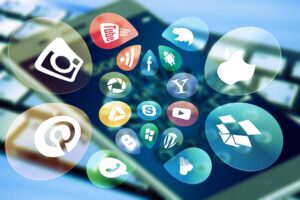 Smartphone use isn’t formally recognized as an addiction – yet. But we have all caught ourselves in addictive behavior. Not long ago, I headed to my bank which is a mere 3 miles from my house. About halfway there I realized I had forgotten my phone. I started to turn around to go get it! REALLY?!?! I used to make cross-country trips without a phone. Now I can’t drive 3 miles to the bank? In town on a sunny day?
Smartphone use isn’t formally recognized as an addiction – yet. But we have all caught ourselves in addictive behavior. Not long ago, I headed to my bank which is a mere 3 miles from my house. About halfway there I realized I had forgotten my phone. I started to turn around to go get it! REALLY?!?! I used to make cross-country trips without a phone. Now I can’t drive 3 miles to the bank? In town on a sunny day?
The addiction is bad enough in adults but children, teens and young adults are even more susceptible as they have grown up with a phone in their hands.
Why is it hazardous?
- Constant notifications and activity interfere with concentration.
- People become less social when they focus on their phone instead of the people around them. Technology can never replace a friendly face and a smile.
- Children and young adults are particularly damaged as they are still developing social skills and miss experiences that help them grow.
- Scrolling through news feeds can be huge time sucks lowering productivity, happiness and even the amount of sleep you get.
- We literally get a hit of happy hormones (dopamine) from some phone activity. We are training ourselves to want more and more.
- Multiple studies have shown increases in depression, anxiety and other mental health issues are directly related to phone usage time.
- Even communities, cities and social groups lose opportunities when people sit in public spaces using their phones instead of interacting with others.
How do you disconnect?
No, don’t throw away the phone! Small adjustments in your behaviors can have big results. Our lives will become more and more connected to our phones with SmartOvens, Informed Mail Delivery, integrated calendars, etc. etc. etc. So there is no better time than TODAY to start intentionally disconnecting from your phone.
Research recommends these actions:
Notifications
Set notifications from social media platforms, your emails, services to come in a one time once a day instead of separate notifications from each one at each little action. (This will also make you more productive as you get into “email mode” and answer several emails at once.) Not having all those dings and blips on your screen will also lower your stress level.
Hide your social media and email apps
Drag the icons for your social media platforms, email apps, service providers to your 2nd or 3rd screen so you don’t see them all the time. You can even put them into a “Once A Day” folder. Or delete the apps from your phone completely and only access the apps from your laptop.
Hide the phone
There really is some truth in “out of sight, out of mind.” During meals, put everyone’s cell phones in another room. In the office, put the phone behind you and on silent for a set period of time to let you focus on a project.
Make access a little inconvenient
Don’t use biometrics or Facebook ID or other shortcuts for logging in. Make logging in a little bit harder to give yourself time to think “Do I really need to do this right now?” Science shows this small pause reduces phone and app usage!
Gray your screen
We are attracted to colors and images. Set a time – maybe 2 hours behind bedtime – to gray out your screen. It will reduce usage. It will reduce anxiety by making the screen less attractive therefore easier to turn off.
Make a list of tasks or set time limits
Before you pick up the phone, make a list of the tasks you need to do. Don’t just pick it up and “walkabout!” Mindless wondering eats up a lot of time. Setting time limits will also help you focus on what you need to do.
Your support team from Building Bridges Business Solutions and Your Computer Lady want you to be happy, healthy and productive with all of your technology! Call us if you need further assistance!
- (602) 604-5000
- (480) 929-0335

